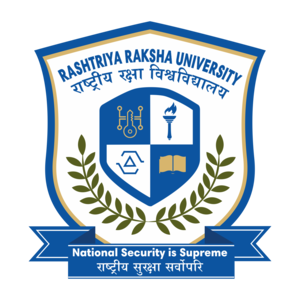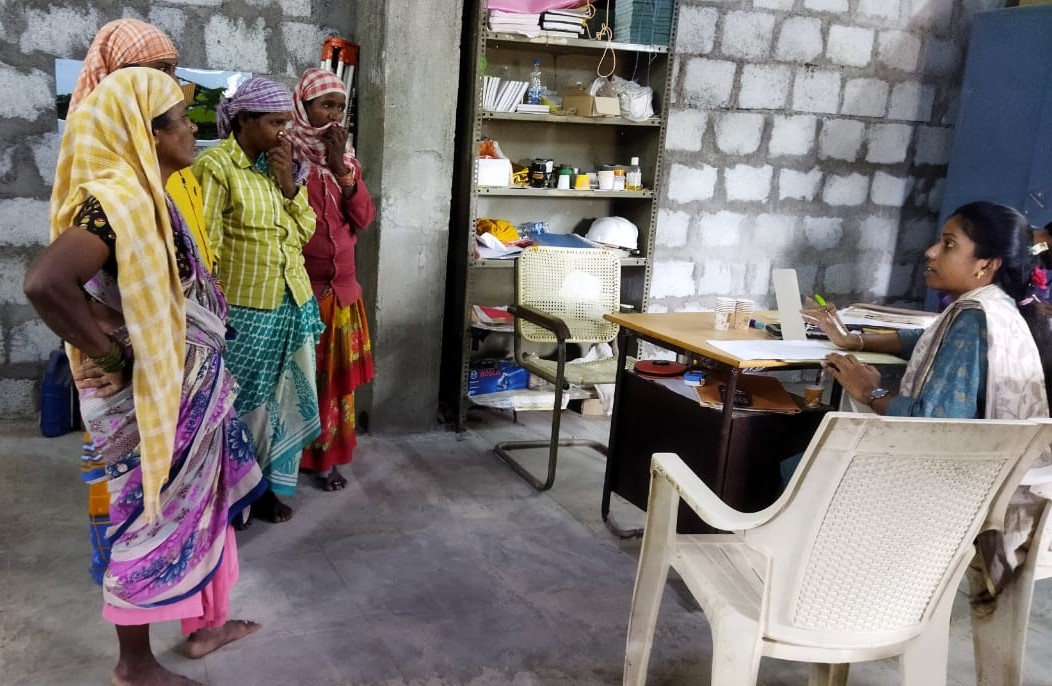
The Need for Effective Implementation of Education Reforms in Indian Prisons
The Need for Effective Implementation of Education Reforms in Indian Prisons
- Afrrin Advani, O.P Jindal Global University
Introduction :-
The effectiveness of correctional services for prisoners have always been questioned to ascertain whether they add value to the social and economic reconstruction of the country. Rehabilitation, as a theory of punishment, bases itself on the assumption that criminal behaviour is not caused by a rational choice on the part of the offender, but by ‘criminogenic risk factors’ such as unstable family relationships, substance abuse and poor mental health. When these factors have a cause and effect on crime involvement, inmate re-offence can be reduced if correctional interventions are applied. Education, as a reformative measure, is known to be one of the most powerful tools to ‘control’ criminal behaviour in an individual. Hence, we must examine the socio-economic impact of prison education reforms and consequently assess whether they are being implemented in Indian prisons effectively.
Rationale for rehabilitative education measures :-
According to the National Crime Records Bureau’s (NCRB) 2019 Prison Statistics, among the 4,78,600 prisoners in India, the literacy profile of 41.6% prisoners were below class X, and 27.7% of them were illiterate. Such low literacy rates suggest a causal relationship between education and crime wherein the number of years and the quality of education one receives is indicative of their criminal thoughts and behaviour. The classic Becker model of crime states that individuals compare the costs and benefits of criminal participation before deciding whether to commit a crime. The better and longer duration of education an individual receives, the costs of criminal participation increases. This is because the more a person educates himself, the better his prospects get in the labour market. If one can sustain themselves financially, the benefits of committing a crime seem less favourable. However, despite there being a multitude of empirical studies which agree to the causal relationship between education and criminal behaviour, not all studies agree to this. Some researchers assert that a country’s average education level is not particularly an indicator of the crime or reoffence rate.
Correlation between education reforms and rate of recidivism in an economy :-
In-prison rehabilitation present today depends on the jurisdiction implementing them. Still, they generally include measures such as Cognitive Behavioural Therapy (CBT), academic education, employment preparation and Substance Use Disorder Treatment (SUDT). Though these correctional interventions do help in re-integrating prisoners, several empirical studies have suggested that education programs have by far, played the most extensive role in reducing recidivism. In 2013, Rand Corporation conducted a study which found that Inmates who completed educational programs were 43% less likely to return to incarceration within three years compared to those who did not participate. There are several factors which play a role in the rate of recidivism, but the most plausible factor for reoffence is centred around the convict’s literacy rate and vocational training. Furthermore, higher recidivism significantly impacts the whole economy because the country faces opportunity costs by diverting tax money into the criminal justice system. Taxpayer’s money which could instead be spent on free healthcare and public goods are now being spent on keeping an inmate in prison.
Prison education measures in India and its subsequent effects :-
It was surprising to note that prison education and other reformative measures were wholly overlooked and left out in India’s criminal justice system. This phenomenon was mainly astonishing because prison education measures such as the Bard Prison Initiative in the United States and several others across the globe have definitively proven to be effective in reducing recidivism. Research conducted by the U.S. Sentencing Commission (USSC) found that ex-convicts who had attained a college degree had a rearrest rate of 19.1 % whereas those who did not finish a high school degree had a staggering rearrest rate of 60.4%. There is, without a doubt, a need for education programs in prison because of the social and economic welfare it brings into society. If there are abundant studies providing data on the success of such programs, a question arises as to why has India not successfully implemented them into their prison institutes? Why have educational programs begun across the nation and yet, this measure of reformation is still considered as mostly neglected. Qaiser Hayat, in his 1983 article ‘Prison Education in India’ found plenty of factors which disrupted prison education reforms. Low teachers’ salaries, shortage of reading materials, inadequate funding, and the overall poor administrators\' attitudes towards the programs undeniably discouraged the continuance on education in prisons. Why are we not actively solving these barriers?
Performative aspects of education in Indian prisons :-
NCRB’s 2019 Prison Statistics do mention the number of prisoners who benefitted from education and vocational training. Still, these numbers are proportionally minuscule compared to the number of prisoners present in the country. Out of the total number of prisoners in India at the end of 2019, less than 22% of inmates benefitted from either elementary, adult, or higher education and less than 12% received vocational training. Not only are these statistics poor, but the number of inmates educated in prisons also decreased from the year before (in 2018, approximately 23% of prisoners were educated in prisons)19. Substandard results from prison education in the country is a pressing issue which must be dealt with soon for the sake of public welfare and safety. A total of 1,84,962 convicts were released in 2019, and because there is a lack of prison reformation, unregenerated ex-convicts will re-offend and cause harm to innocent people. The situation of releasing unreformed prisoners completely fails to look after the reason why prisons exist in the first place, which is to avoid crime on the streets.
The Indian criminal justice system does not outrightly ignore prison education or rehabilitation as a theory of punishment. The country has adopted several measures which aim to reform its convicts. A rise in general awareness, public information and international pressure aided in the appointment of State committees such as the Bombay and U.P Jail Reforms Committee. It is the State Government’s responsibility to manage and maintain prisons, but the Ministry of Home Affairs (‘MHA’) does interfere by advising on various issues concerning prisons and prison inmates. The MHA published advisory guidelines for educational programmes for prison inmates. The guideline stated that “there should be an effort to achieve total literacy among prisoners across the country. It has, therefore, recommended that there should be facility of correspondence courses in vocational disciplines in the prisons.”. The MHA continually recommends changes in prison administration through publishing prison manuals and acts. Nevertheless, if the country is adopting methods to improve prison reformation, effort toward the program’s implementation must be directed.
Conclusion :-
Though various committees and acts have been passed aiming to improve the inmate education opportunities in India, the root of the problems is left unsolved. It is not enough for a legislative body to provide guidelines; they must structure it in such a way that prison reform measures are being actually applied and followed through. The inability to provide a suitable environment for education and rehabilitation means that prisoners will be stuck in a vicious cycle; from being a prey of criminogenic risk factors to the inability to procure a stable job and income. Education in prisons, without a shadow of doubt, have proven continuously to assist the reduction of recidivism worldwide. The impact of reforming a prisoner is profoundly beneficial to the society and economy. The society benefits with a more excellent quality of life, and the economy’s pocket does not drain in prison institutions. For India to reap the fruitfulness of prison education, existing policies and programs must be evaluated to assess its operational efficiency. Unfortunately, the policies and laws enacted in the country are not efficiently executed, making such ‘monumental’ work towards reformation legislation completely pointless. Prison education in India, coined as an ‘institutionalized insufficiency’, must be turned into a roaring success so that the nation can enjoy its benefits.
References :-
1.H J Bruyns et. Al, The Role of Education in the Rehabilitation of Offenders, <https://www.researchgate.net/publication/272326284_The_role_of_education_in_the_rehabilitation_of_offenders>, accessed 03 June 2021.
2.What Is Rehabilitation? <https://law.jrank.org/pages/1933/Rehabilitation-What-rehabilitation.html#ixzz6bpQ2ShiM>, accessed 03 June 2021.
3.The Government of India, Prison Statistics India–2019 Executive Summary, <https://ncrb.gov.in/sites/default/files/Executive-Summary-2019.pdf>, accessed 02 June 2021.
4.Brian Bell et al., Why does education reduce crime? <http://ftp.iza.org/dp11805.pdf>, accessed 02 June 2021.
5.Mac Taylor, Improving In-Prison Rehabilitation Programs, <https://lao.ca.gov/Publications/Report/3720>, accessed 02 June 2021
6.Rand Corporation, The Case for Correctional Education in U.S. Prisons, <https://www.rand.org/blog/rand-review/2016/01/course-correction-the-case-for-correctional-education.html#:~:text=Inmates%20who%20participate%20in%20any,to%20prison%2C%20the%20study%20found>, accessed 04 June 2021
7.Tegeng G, Exploring Factors Contributing to Recidivism: The Case of Dessie and Woldiya Correctional Centers, <https://www.hilarispublisher.com/open-access/exploring-factors-contributing-to-recidivism-the-case-of-dessie-and-woldiya-correctional-centers-2151-6200-1000384.pdf>, accessed 03 June 2021
8.UNITED STATES SENTENCING COMMISSION, Recidivism Among Federal Offenders: A Comprehensive Overview, <https://www.ussc.gov/sites/default/files/pdf/research-and-publications/research-publications/2016/recidivism_overview.pdf>, accessed 05 June 2021
9.Qaiser Hayat, Prison Education in India- National Criminal Justice Reference Service, <http://www.ncjrs.gov/App/publications/abstract.aspx?ID=97924>, accessed 04 June 2021
10.The Government of India, PRISON REFORMS- Ministry of Home Affairs, <https://www.mha.gov.in/Division_of_MHA/Women_Safety_Division/prison-reforms#:~:text=The%20All%20India%20Committee%20on,rendered%20by%20the%20prison%20personnel >, accessed 02 June 2021
11.David A. Thomas et. al, Theories and Objectives of Punishment, <https://www.britannica.com/topic/punishment/Rehabilitation>, accessed 02 June 2021.
12.Zubair Ahmed, Jail reforms in India: A study of Indian jail reform committees, <http://www.educationjournal.in/archives/2016/vol1/issue3/1-3-35.1>, accessed 01 June 2021.
13.Kathleen Bender, Education Opportunities in Prison Are Key to Reducing Crime, <https://www.americanprogress.org/issues/education-k-12/news/2018/03/02/447321/education-opportunities-prison-key-reducing-crime/>, accessed 03 June 2021.
14.Tata Trusts, Ranking States on Police, Judiciary, Prisons & Legal Aid- INDIA JUSTICE REPORT, <https://www.tatatrusts.org/upload/pdf/overall-report-single.pdf>, accessed 05 June 2021.
15.Sanchita Kadam, Country’s Failing Criminal Justice System- India Justice Report 2019 highlights, <https://cjp.org.in/one-policeman-for-every-663-indians-75-paise-per-capita-spend-on-legal-aid/#:~:text=In%202016%2C%20Uttar%20Pradesh%2C%20with,per%20day%20on%20each%20prisoner>, accessed 04 June 2021
16.Kausumi Saha, Prisoners’ Educational Reforms in India: An Institutionalised Insufficiency, <https://www.sprf.in/post/prisoners-educational-reforms-in-india-an-institutionalised-insufficiency>, accessed 05 June 2021.












